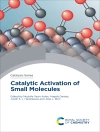This brief goes back to basics and describes the Quantitative structure-activity/property relationships (QSARs/QSPRs) that represent predictive models derived from the application of statistical tools correlating biological activity (including therapeutic and toxic) and properties of chemicals (drugs/toxicants/environmental pollutants) with descriptors representative of molecular structure and/or properties. It explains how the sub-discipline of Cheminformatics is used for many applications such as risk assessment, toxicity prediction, property prediction and regulatory decisions apart from drug discovery and lead optimization. The authors also present, in basic terms, how QSARs and related chemometric tools are extensively involved in medicinal chemistry, environmental chemistry and agricultural chemistry for ranking of potential compounds and prioritizing experiments. At present, there is no standard or introductory publication available that introduces this important topic to students of chemistry and pharmacy. With this in mind, the authors have carefully compiled this brief in order to provide a thorough and painless introduction to the fundamental concepts of QSAR/QSPR modelling. The brief is aimed at novice readers.
Tabela de Conteúdo
QSAR/QSPR Modeling: Introduction.- Statistical methods in QSAR/QSPR.- QSAR/QSPR Methods.- Newer directions in QSAR/QSPR.
Sobre o autor
Prof. Kunal Roy is an Associate Professor at the Drug Theoretics and Cheminformatics Laboratory at Jadavpur University in India and a Fellow at Manchester Institute of Biotechnology (MIB), University of Manchester in the United Kingdom.
Prof Roy is also an Associate Editor of Springer’s Molecular Diversity Journal. His main research area of interest is QSAR and Molecular Modeling and his h-index is 31.












